I just got back from a trip to Iceland in late November, but I almost didn’t go. As I was researching whether camping in a van in the fall or winter in Iceland was possible, I couldn’t find any good guides on whether I could do it.
Some forums from years ago were saying it wasn’t possible to camp outside of summer. Lots of campsite websites were saying they were already closed for the year. There was a forecast for snow. All the signs were pointing to the fact that camping in Iceland in the fall or any off-season months wasn’t possible.
But despite some setbacks, I successfully camped in Iceland in a van during winter weather, and I live to tell the tale!
Let me show you how I did it, campsites that were open, what van to choose and everything I wish I knew beforehand in this ultimate guide to camping in Iceland in the off seasons of fall, winter and spring.
[This post contains affiliate links.]
Table of Contents
Can you camp in Iceland in the off seasons (fall, winter, spring)?
Summer is undeniably the best time of year to camp in Iceland, but it’s possible year-round! You won’t be able to camp in a tent outside of summer’s warmer months, but it is possible to camp in a van.
What kind of van should I use for camping in Iceland in off season months?
A heater is not optional when camping in Iceland in the winter, so that’s one requirement for your van. It was already in the sub-zero temperatures when I was there in November, so it would be very dangerous to camp without a heater.
Keep in mind also that some of the campsites didn’t have kitchens or common rooms where you can cook. If you have a van with a built-in kitchen you don’t have to worry about that.
I chose the smallest and cheapest option with Rent.is (Volkswagen Beach Caddy), and it did the job. It didn’t have a kitchen, but I managed without it (although I cooked less than I expected to). The van did prove itself worthy in several inches of snow and the Wasabo heating was warm enough to sleep comfortably.
I’d definitely recommend this van if you’re on a budget and traveling a week or less.
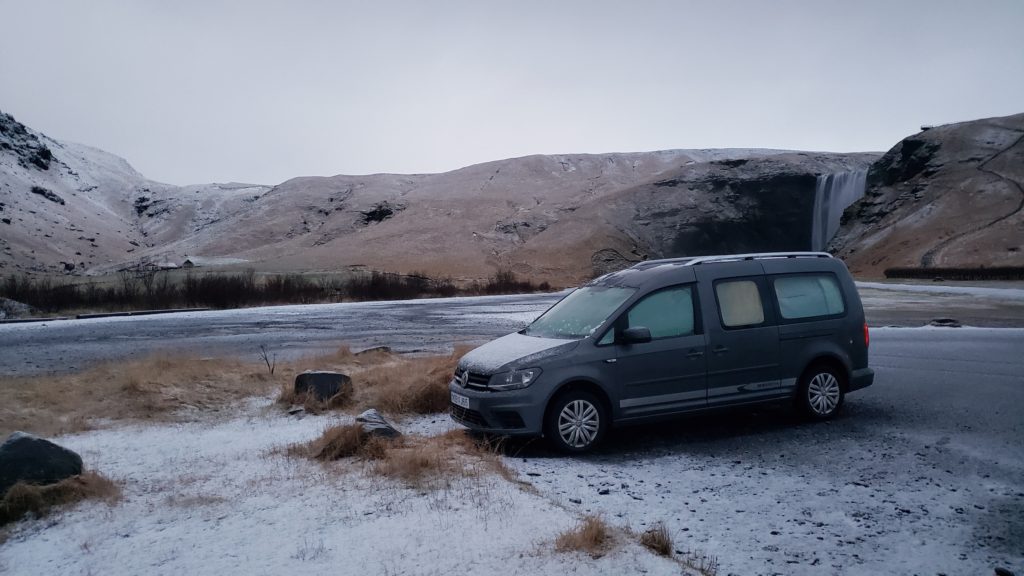
If you have more than two people or want a kitchen or even bathroom in your van, you can check out the other van options Rent.is has. I had no issues with this company and doesn’t seem like others have according to the reviews.
A table and chairs were included in my van, and I wish I asked to leave them at the office. I didn’t use them a single time (it was way too cold to sit outside) and they just got in the way.
What to bring when traveling by van in Iceland in winter months?
You know what not to bring (table and chairs and any belief that you’ll be able to cook outside), so here’s what to bring (or rent).
I rented sleeping bags (and they came with sleeping bag liners) and cookware (camping stove, pots, pans, kettle, plates, bowls, mugs, utensils…everything you need pretty much). The van also came with window covers, which not only provide privacy but also helps insulate against the cold a bit.
Like I said before, don’t even think about sleeping in a van without heating. It’s very cold in Iceland outside of summer months.
A light is useful as well since you don’t want to burn your van battery.
And because your clothes will likely get wet if the forecast isn’t great, bring extra clothes and shoes with you; it’s near impossible to dry things in van.
You might find my van with minimal conversions guide useful while traveling in Iceland.
Can I camp anywhere in Iceland?
No. You used to be able to wild camp, but not anymore. That means you can’t just park your van anywhere you want for the night. You have to park at a campsite.
Can I drive anywhere in Iceland in off-season months?
Road closures are a big problem in the winter. If you’re camping in a van and don’t have an off-road vehicle, you should stay to the south where the roads are more likely to stay open.
Keep in mind also that most roads don’t get plowed in Iceland. It snowed a few inches when I was there (late November) and I didn’t come across any plowed roads. So be aware of that if you’re not used to driving in snow.
I stayed in the southwest region and I wouldn’t recommend going further if camping in Iceland during winter months. Leave the other part of the island for a summer trip to Iceland.
Will campsites be open in Iceland during off-season months (fall, winter and spring)?
Not all of them. And this caused quite a bit of trouble for me.
Twice I arrived at campsites at night (Svinafell Campground and the campground in Vik) only to find that they were closed for the season—I hadn’t seen any info suggesting that they wouldn’t be open.
So, I’d suggest you have an itinerary beforehand with campsites that are going to be open. It was very stressful every day not knowing where I’d be sleeping.
Here is the itinerary I had in the end while camping Iceland in the fall/winter, complete with the campsites I stayed at. Definitely check if they’ll be open, but hopefully you’ll find luck with them too!
Iceland 1 Week Itinerary (with campsites open in off season)
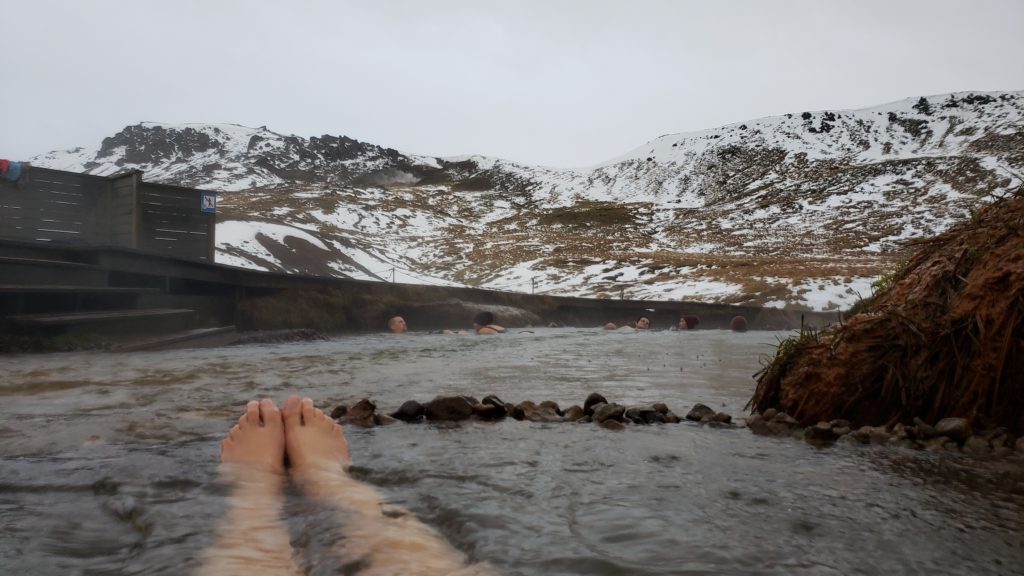
Day 1: Reykjadalur Hot Spring Thermal River
This was a super cool experience, but it can be quite dangerous in off season months. It certainly was dangerous when I went in November.
The reason for this is that you have to hike an hour and a half walk one way to reach the thermal river. And there was snow and ice on part of the path, which made it a bit dangerous. But that wasn’t the worst of it.
So, you can swim in the river, even in the sub-zero winds and with snow all around. There are no changing rooms, although there are wooden walls where you can get changed without everyone in the river seeing you naked as you hurriedly change into a swimsuit.
You will be very cold, but that will change almost immediately after running into the river and finding a spot deep enough to submerge your whole body.
The worst part is getting out. Especially if conditions were as bad as they were for me: it had rained on all my clothes while I was in the river, and the winds were fierce and freezing. And so with wet and freezing clothes, I had to hike over an hour down to the van on an icy path in freezing rain. A very early lesson on day one to check the weather (which changed very fast in Iceland).
So anyway. Hopefully you won’t have the same experience I had, but even if you do, you’ll have a nice warm campsite common room to warm up (with dryers in which you can tumble dry your soaking wet clothes).
Night 1 Campsite: Camping Selfoss
The first and possibly best campsite of my November van camping trip. Showers are free and there is a very nice (and warm!) common area with a kitchen. It has a stove so you won’t need to bring a camping one in, but do bring your utensils and cookware.
Alternatively, if you arrive late on day one and want to stay close to the airport, see the campsite for Night 6.
Day 2: Seljalandsfoss, Skogafoss, and Reynisfjara Beach
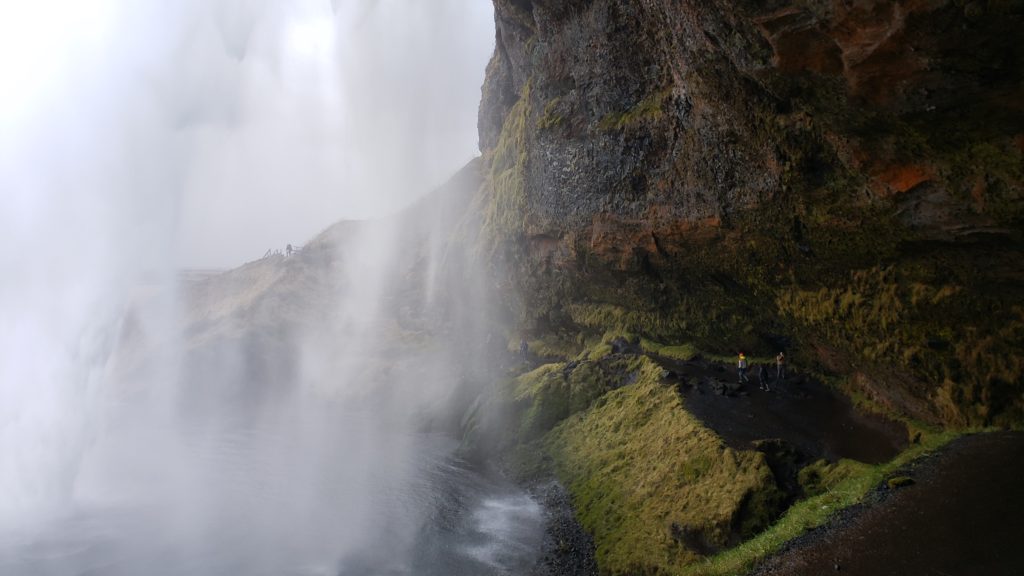
Today you’ll be seeing two very beautiful waterfalls: Seljalandsfoss and Skogafoss. There’s a hike you can do above Skogafoss to other waterfalls, but for the sake of time I skipped it (I had a late start to the day).
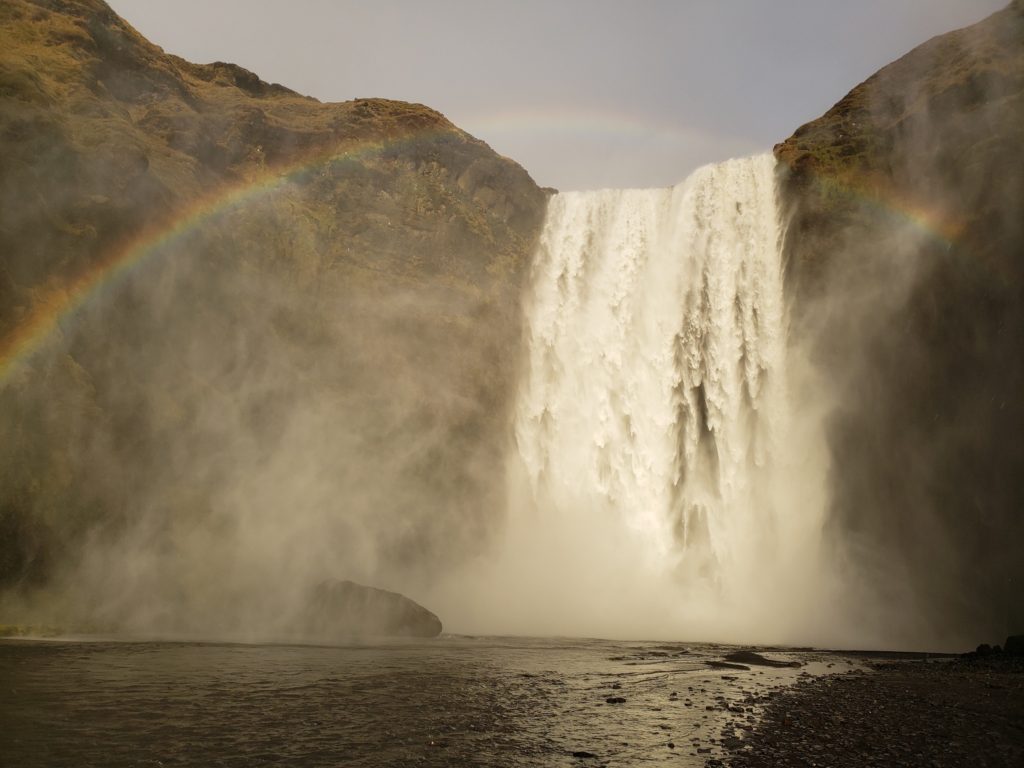
It allowed me time to see Reynisfjara Beach before sunset (at 4:30!), and it’s very worth visiting. Like most beaches in Iceland, it has black sand. But what makes it unique are the beautiful basalt column formations.
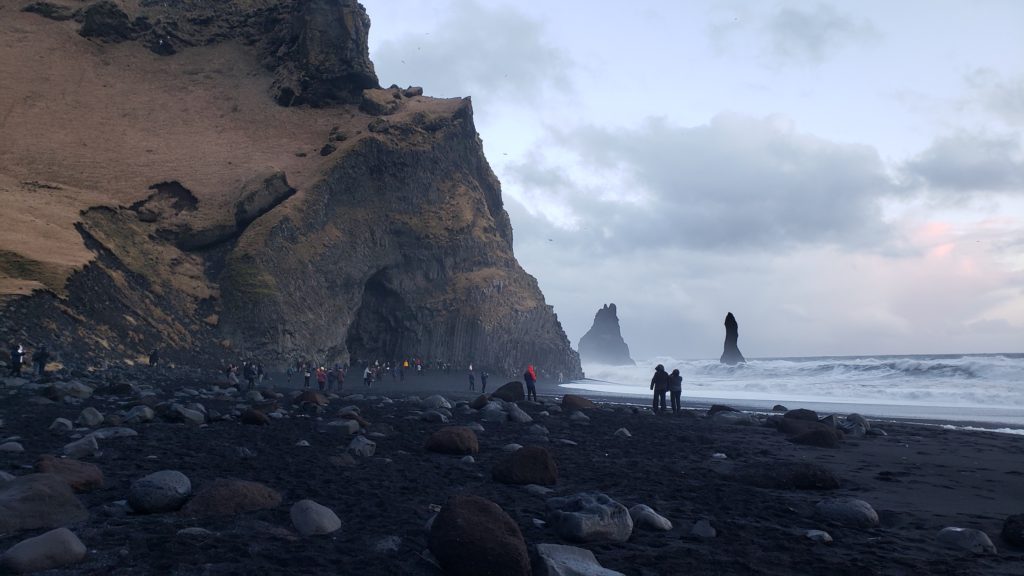
If you’re not against driving in the dark, you’ll have nearly a two-hour drive to the next campsite, which I’d recommend if you want to do a glacier hike the next day.
Night 2 Campsite: Skaftafell Camping
This is a very rustic campsite with no kitchen. There weren’t really any restaurants in the area too, so it might be a sandwich dinner like it was for me if you don’t have a kitchen in your van.
There is a laundry room, toilets and showers though.
Day 3: Diamond Beach and Glacier Hike
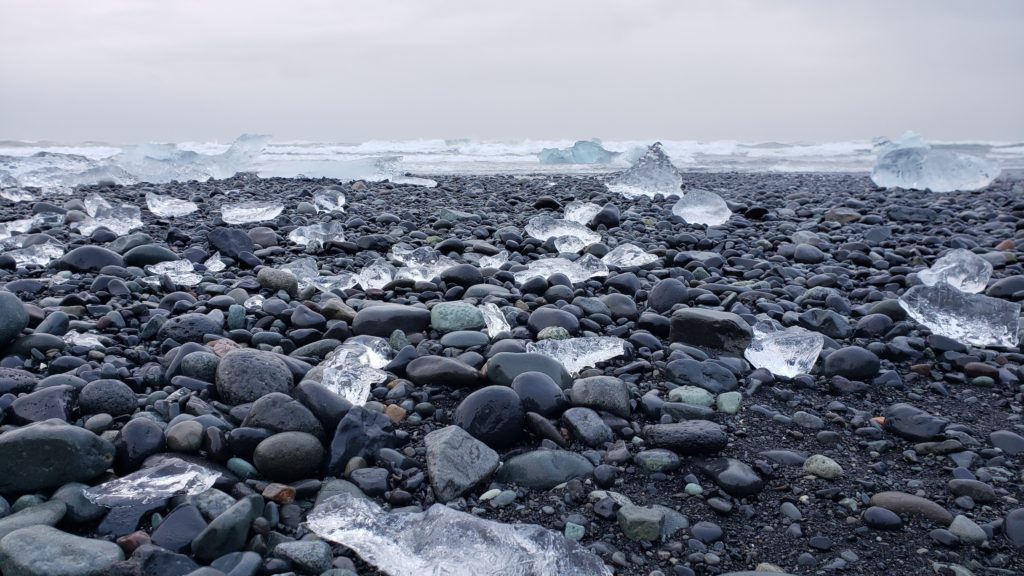
Wake up before the sun today for the 45-minute drive to Diamond Beach. It’s so named because it’s littered with pieces of glacier ice, and the clear ice on the black stone beach contrasts beautifully.
Also walk over to the Jokulsarlon Lagoon, where you will get to see some impressive and beautiful icebergs. If you have an extra day to spare, you can take a boat trip to see the icebergs up close.
If not, hurry back for you glacier hike back at Skaftafell (where you camped the night before). You’ll be hiking a part of the glacier that is Vatnajokull National Park. This is the biggest glacier in Europe and a stunning experience to be on.
I highly recommend this glacier hike tour, since in addition to the hike you also enter an ice cave! It’s a bit pricey (about $120), but it was the one big splurge I made on the trip. And it was SUPER worth it. Transportation, crampons, helmet and guide were all included.
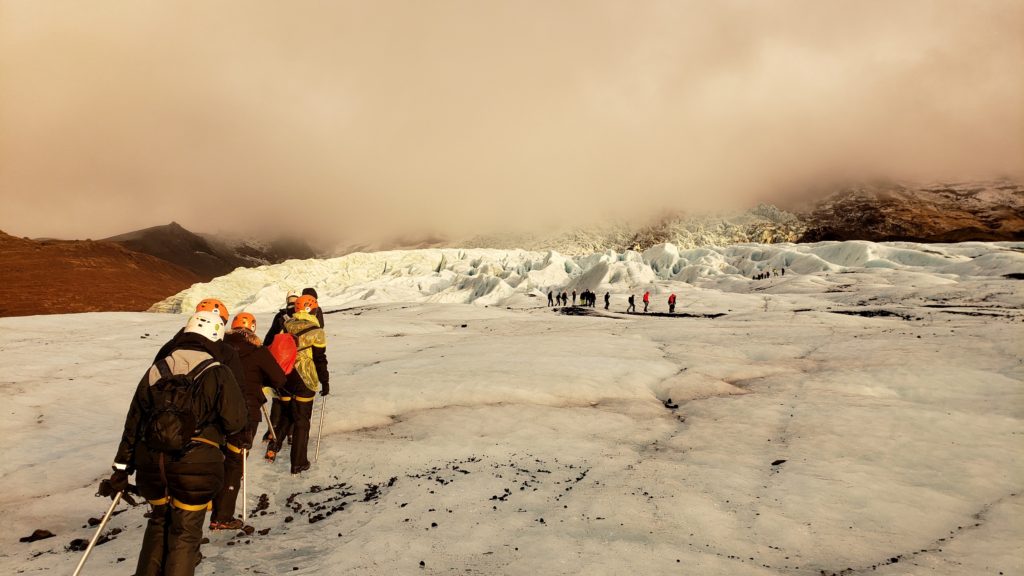
Depending on daylight hours, you might be able to see Svartifoss. This is a waterfall with similar basalt formations as Reynisfjara Beach. I didn’t have time for it, so I drove back to Skogafoss to sleep at the famous campsite with a waterfall view.
Night 3 Campsite: Same as night before or Skogar Campsite
As I said, this is probably the most famous campsite in Iceland, and camping is possible here even in the off-season months of fall, winter and spring. It is a very rustic campsite however and therefore a bit overpriced.
There is no kitchen or free showers, but there are toilets, and a very pretty view to wake up to.
Day 4: Hrunalaug Hot Spring and Secret Lagoon
Today is all about relaxation. Not one, but two hot springs to relax after the past few busy days and to warm up.
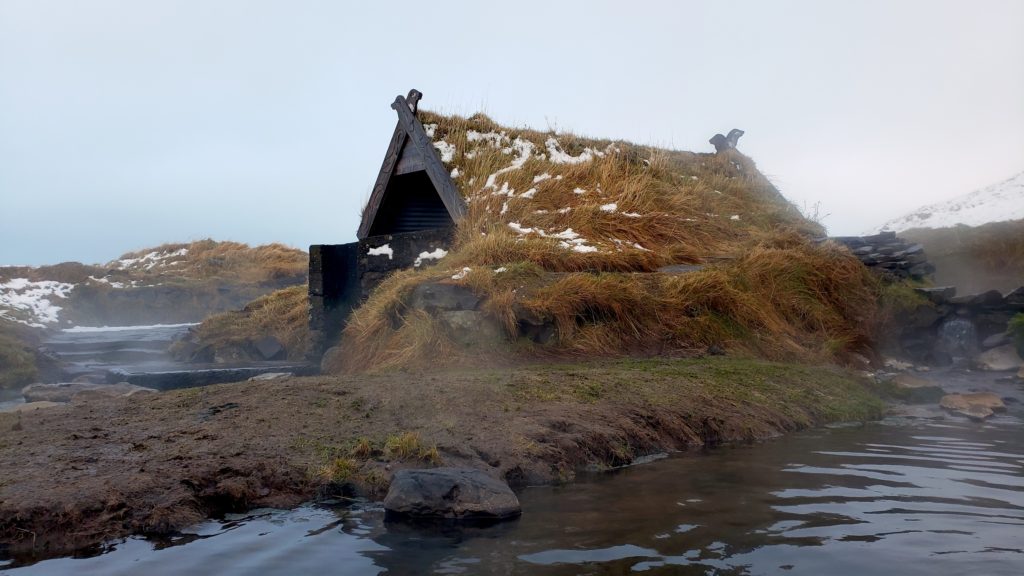
Hrunalaug Hot Spring is my favorite, although I was lucky to have gotten it fairly empty. It’s a very small hot spring with a cute little turf house to change in and is owned and maintained by a local farmer. I have heard that it can get very busy though and doesn’t fit many people, but that’s where a snow storm comes in handy. I arrived right after a pretty nasty snow storm so I had the place to myself for a while!
The Secret Lagoon is more like a pool and much bigger. It also has some natural hot springs around the swimming pool, but you can’t swim in those—you’d get serious burns!
And there are showers at the Secret Lagoon, so you can shower there and not have to worry about finding a campsite with those! It’s open past the early sunset too, which is why it’s great visiting it in the fall, winter and spring when you can’t do much else.
Night 4 Campsite: Skjol Campsite
We were the only ones sleeping the night here, but we luckily ran into workers when we arrived late at night. They told us to pay in the morning, so you can do that if you arrive late.
The only facilities we had open to us in the winter were the toilets and showers. But since I ate a restaurant that day, that was all we needed. I didn’t even need the showers since I had one at the Secret Lagoon.
No kitchens, but they do have a restaurant on site.
It’s a bit spooky being there all alone with snow and ice all around, but this campsite is where I lucked out and saw the Northern Lights! It really is all about luck, so you might want to have someone who tracks the lights take you on a Northern Lights Tour from Reykjavik.
Day 5: Gulfoss Falls, Strokkur geyser and Thingvellir
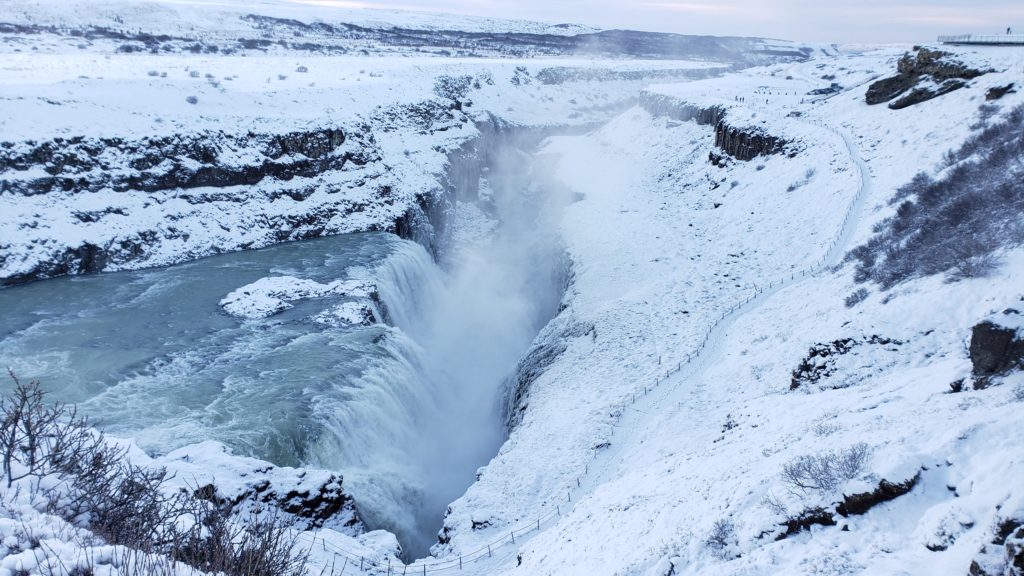
Gulfoss is located not far from the campsite, so it’s easy to get there in the morning. It’s known as the Little Niagara Falls, and it’s easy to see the resemblance. The landscape around Gulfoss is much more beautiful though.
Next up are a series of geysers. One of them, Geysir, is supposedly where the name for geysers came from. It’s not active, but still cool to see. Strokkur geyser is active, however, and it goes off every 5-10 minutes.
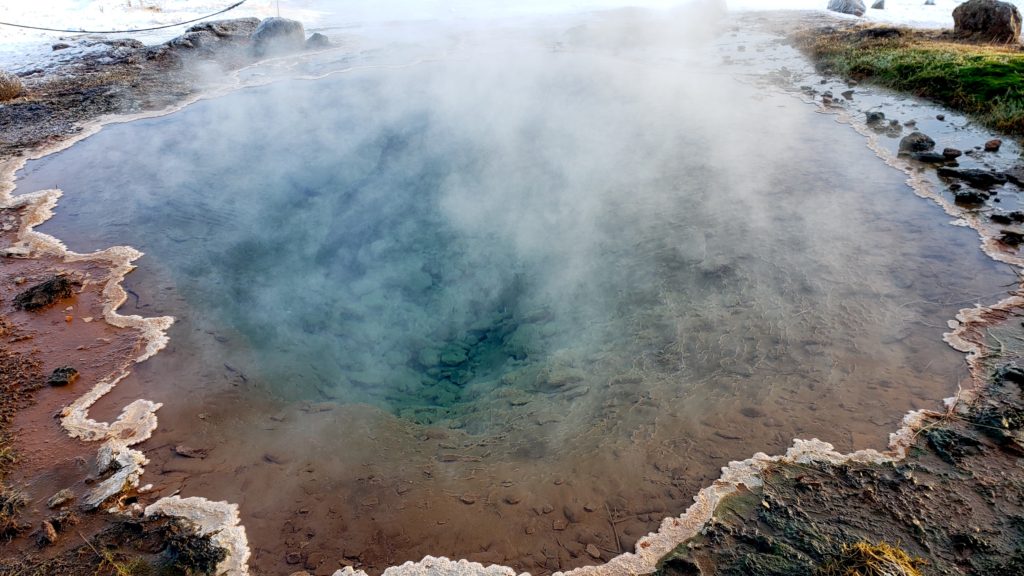
And finally, Thingvellir is an important historical site to visit along the Golden Circle. It’s where the oldest continuously run parliament in the world first met, and although the original structures are mostly all gone, you can still learn about this parliament and appreciate the natural beauty of the area.
Night 5 Campsite: Mosskogar Camping
This campsite is located not far from Reykjavik and on a farm. The owner is very friendly and made winter camping possible. While in the summer there is a kitchen in a cozy greenhouse, in the winter, there is a little kitchen indoors where it’s nice and warm. There’s no stove there though, so you’ll need to bring in your camping stove.
The toilets and showers were nice and warm too, and I loved reading the books on Iceland in the kitchen.
Quick note on this campsite’s open status: The owner said that he will be staying open until December 15 of this year (2021) and will take a few weeks off then. Like with all the campsites, I’d recommend contacting the owners ahead of time to ensure that the campsite will be open!
Day 6: Reykjavik, Krysuvik and North America-Europe bridge
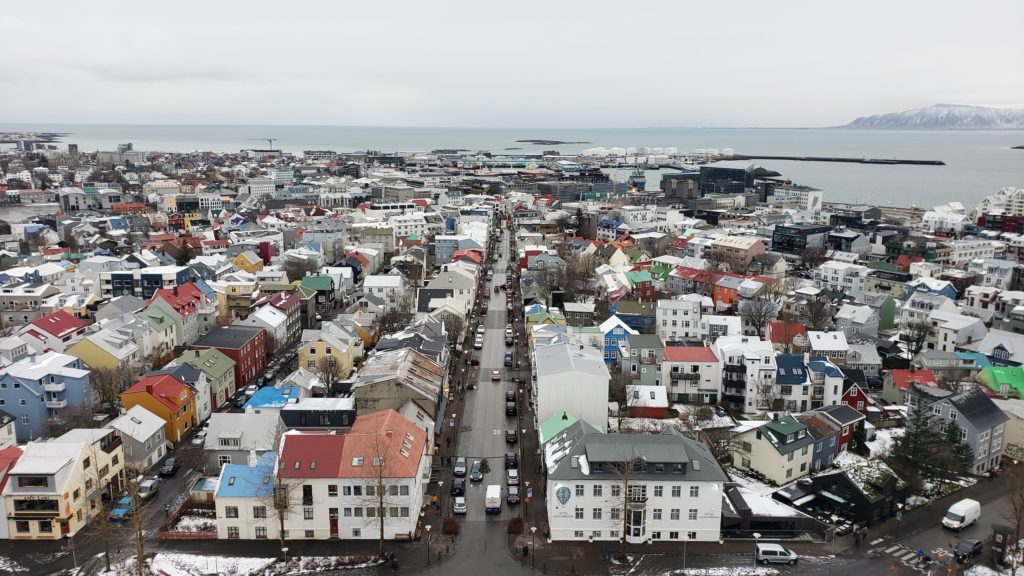
Many people skip Reykjavik on their trips to Iceland, but if you’re camping in the fall, winter or spring you’ll likely appreciate the warmth civilization can provide. Treat yourself to day spent inside museums and eat out in the capital’s many restaurants to get a break from cooking in campsite common rooms.
If you don’t want to spend an entire day here and miss exploring nature, there are several spots around Reykjavik and the Keflavik airport to explore for half a day.
Krysuvik is a colorful geothermal field with hot springs surrounded by colorful soil. It’s featured on lots of postcards and it’s easy to see why. It’s quite small, so you don’t need much time here.
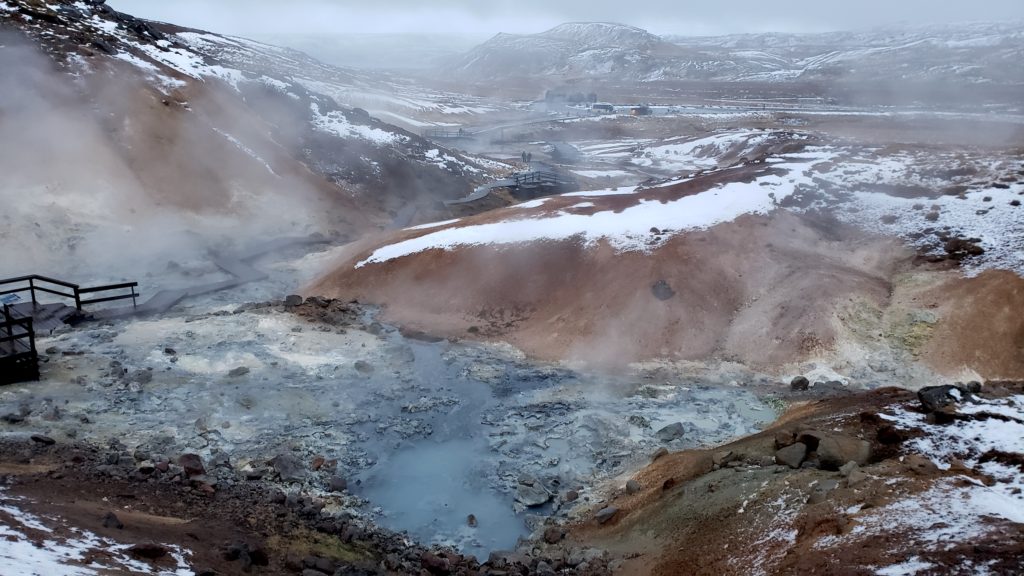
Same goes for the North America-Europe Bridge. It’s bridge that goes over a rift between the North American and European tectonic plates, so you can go from one continent to the other in the matter of seconds! You can also go into the rift (it’s not very deep).
Night 6 Campsite: Campsite Grindavik
This campsite has a huge common room, which is slightly eerie in off-season when not many people are camping in vans in Iceland.
The kitchen was very well equipped with food since it’s close to the airport and many campers leave food they didn’t finish. It also has many hobs, a kettle and microwave. The showers are free here too.
Day 7: Blue Lagoon
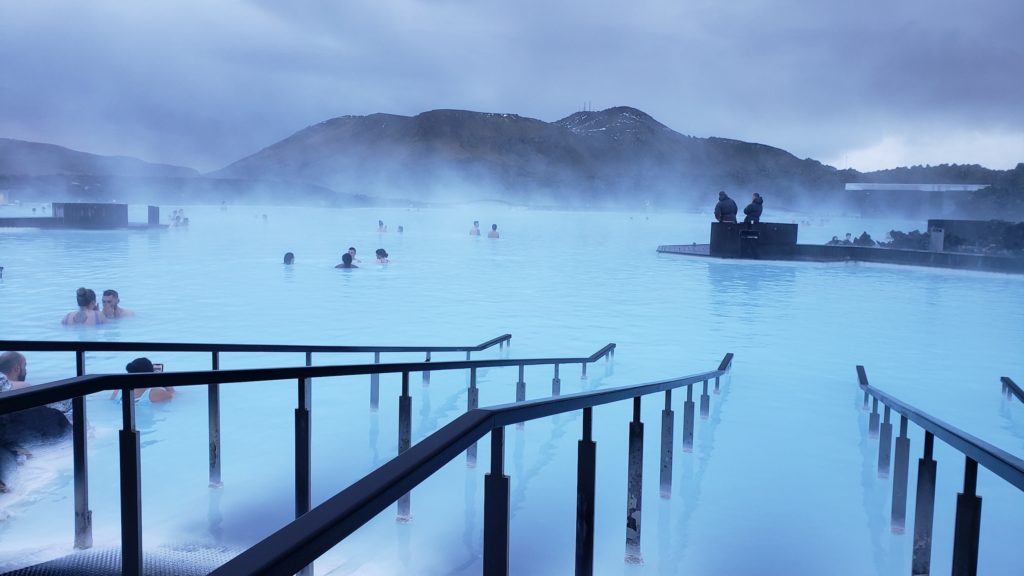
So, you likely will have your fill of geothermal baths, and certainly cheaper ones than the Blue Lagoon. I considered not going to it because the highly inflated prices, but I’m glad I did go.
And no better way to enjoy it than by relaxing in the gorgeous blue water of the Blue Lagoon, complete with a face mask and drink included in your entry.
You’ll also have a nice warm shower there before heading off to airport, and the feeling of warmth and relaxation will make you forget about how cold and stressful sleeping in a van in Iceland during cold months could be.
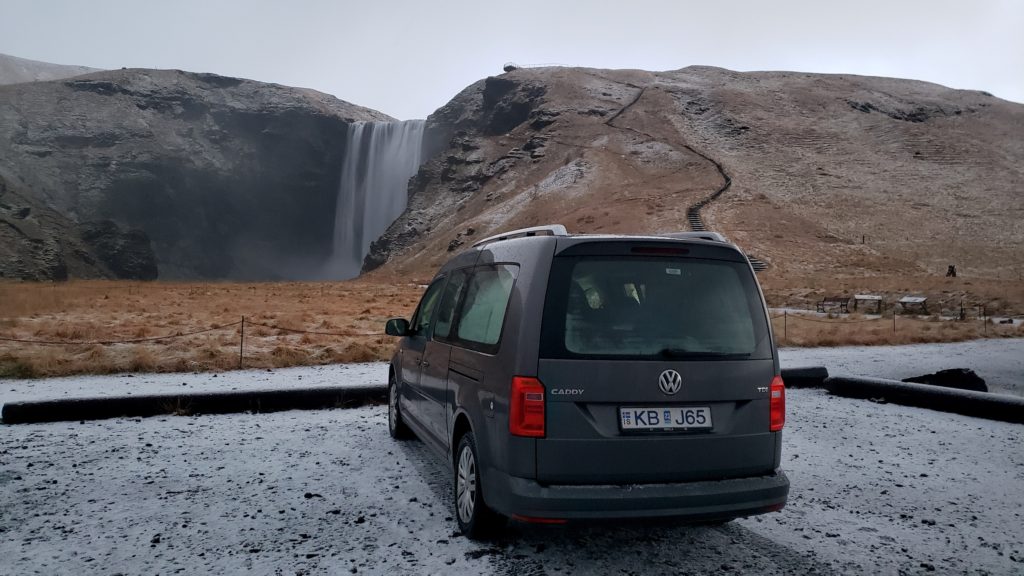
How long should I travel by van in Iceland in the winter?
As you can see in my itinerary, a week was pretty good. Keep in mind that days are very short (only six to seven hours of daylight when I was there), so you won’t be able to fit in much in a day.
I’d recommend a week to see the southwest of Iceland in the fall, winter and spring months while camping in a van. But you may want more days to partake in other winter activities like snowmobiling or skiing. Or you may simply want to see other things not in my itinerary.
Have any other questions about camping in Iceland in a van during off season months of fall, winter and spring? Leave them in the comments and I’ll see if I can help!
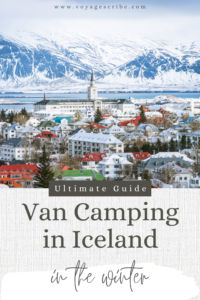
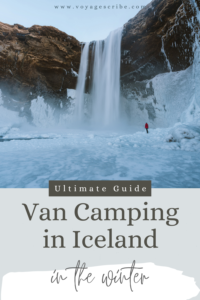
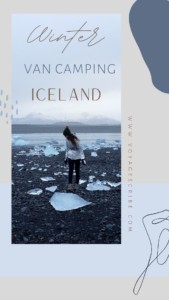
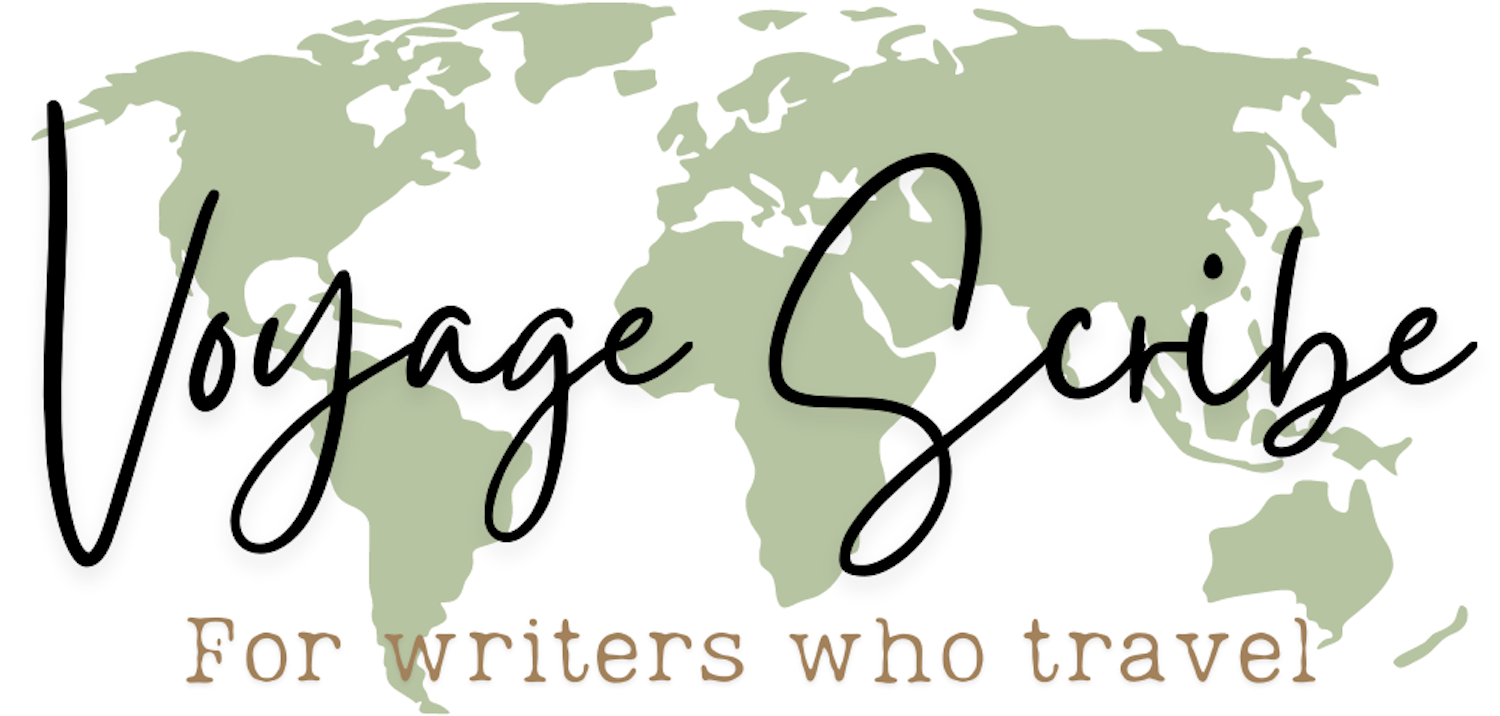
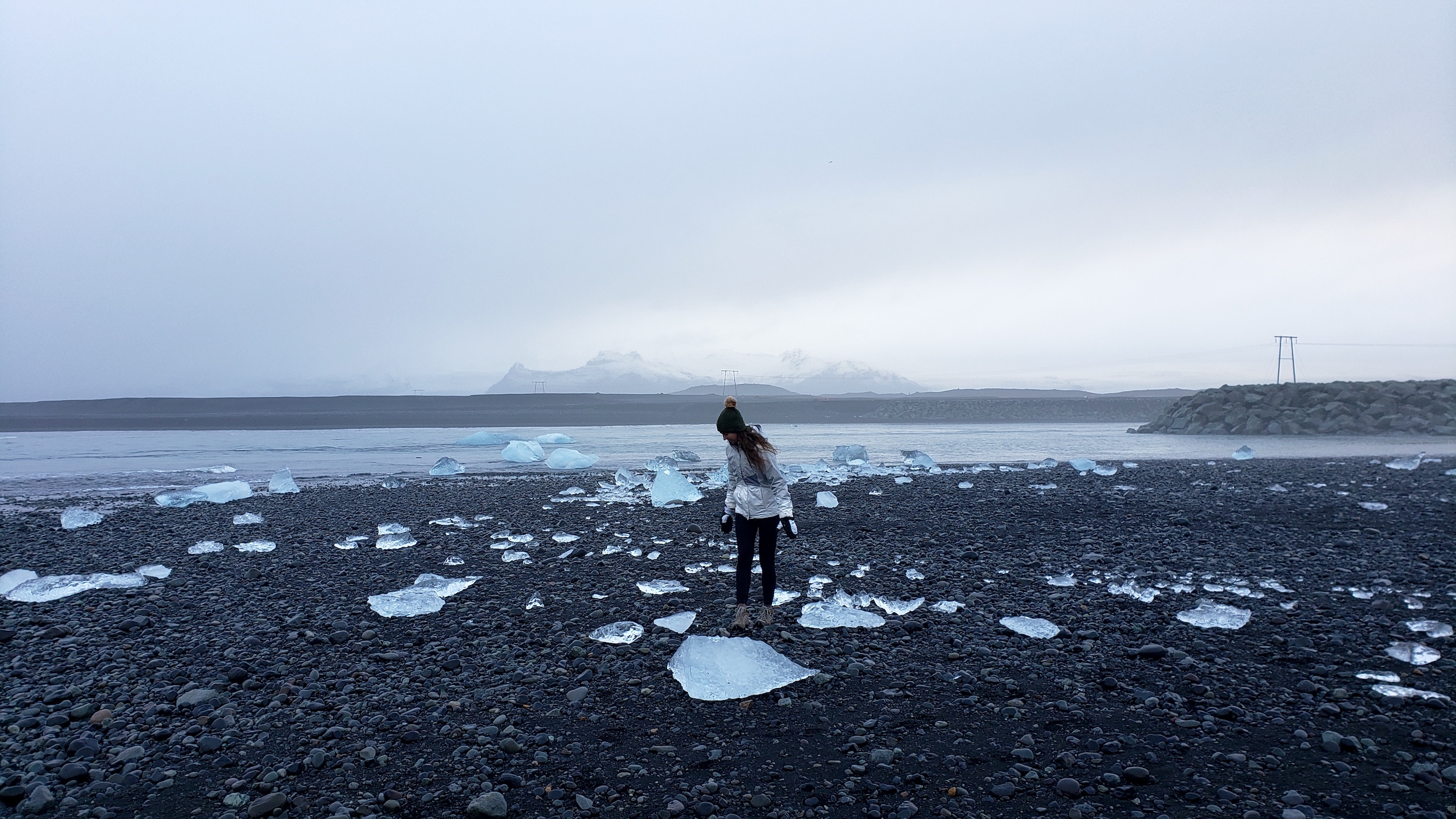
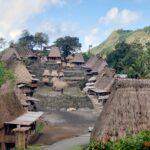

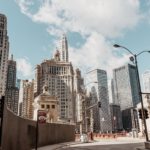
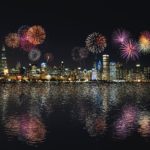
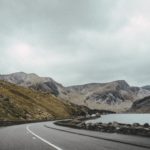
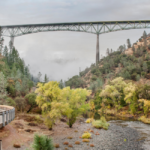

This is really such a comprehensive guide you put together! I’ve always wanted to try van camping, especially in Iceland, and I will use this post in the future to prepare myself for this special trip. 🙂
I hope you get to do it one day 🙂
A great guide with lots of helpful tips for camping in Iceland! I’ll save this post for later!
I’m glad you found I helpful 🙂
Great post, definitely put Iceland high in my bucket list so I could try the hot springs, Blue Lagoon, and ice glacier hike which looks really interesting!
It deserves to be high on any bucket list! Btw, if you want to do a glacier hike keep in mind that you can only do it in the off-season months since tours don’t run in the summer on the glaciers.
I definitely want to rent a van and do this in Iceland. Winter still seems intimidating but the views are worth it!
Totally! November was a good month to visit because parts of Iceland didn’t have snow and other parts did so we got both sceneries 🙂
We’re hoping to do something like this when we go back to Iceland, although we were thinking in the warmer months in case we’re unlucky enough that our heating breaks in the middle of nowhere. I didn’t know that you had to park at specific campsites though so that’s good to know!
Yep! You used to be able to wild camp but it’s illegal now.
We’ve been to Island in the winter but I couldn’t image doing it in a van! Love the cold when the day is over I need warmth 😉
It was quite toasty in the van with the heater! The worst part was getting out of the van in the morning haha
This is such a bucket list trip for me. I lived in Iceland when I was very young, but I don’t remember much about it. I’m planning on going back soon, so this information is super helpful. Thank you!
Wow that is so cool! I’m sure it’s changed a lot since you were little but I hope you have an awesome time!
Great write up! Will bookmark this for our upcoming trip on November this year. Did you see any Northern Lights, by any chance?
Thank you, I hope you find this helpful for your trip! And yes, I did! The weather forecast wasn’t looking too great for it but I lucked out seeing the lights one night 🙂
Thank you!
My pleasure 🙂 I hope this helps you!